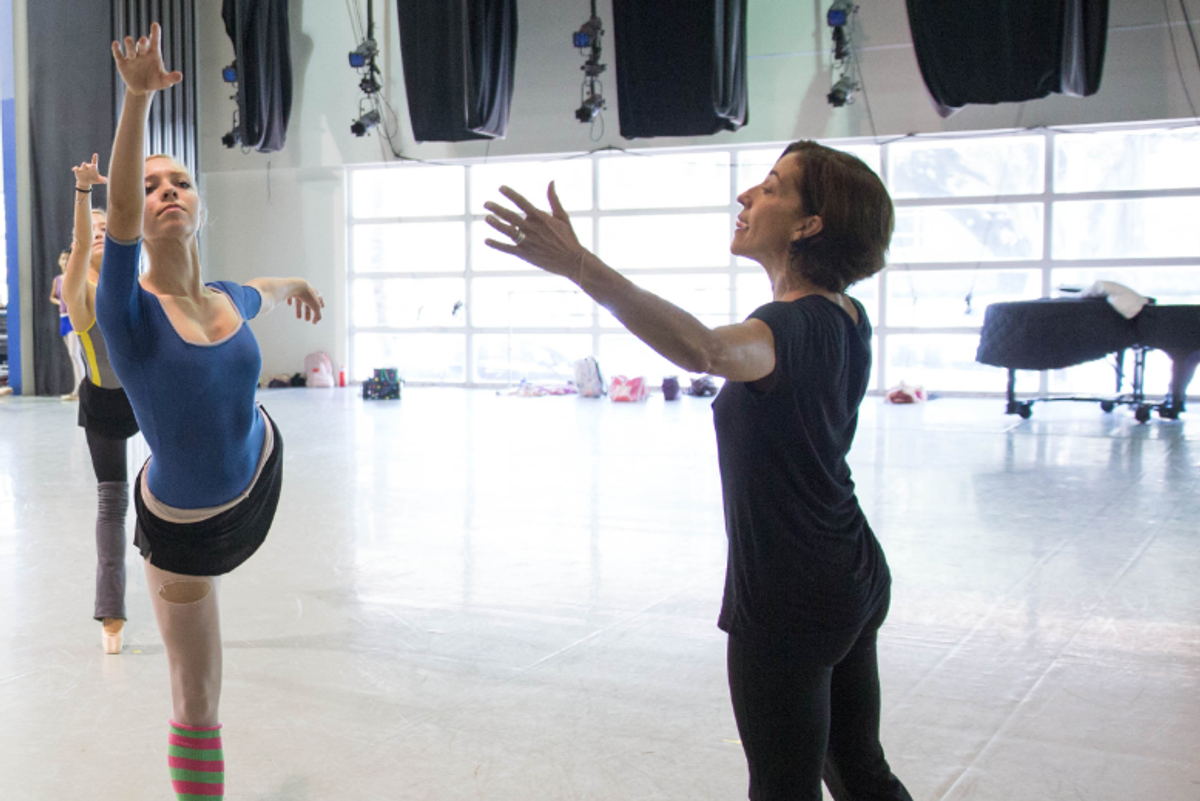Miami Moves: Lourdes Lopez Spices Things Up at Miami City Ballet
This story originally appeared in the August/September 2014 issue of
Pointe.
It was Labor Day weekend of 2012 when Lourdes Lopez received the phone call. Edward Villella, Miami City Ballet’s founder and artistic director of 27 years, had left abruptly, eight months ahead of schedule. Just two days later, Lopez, who wasn’t supposed to take Villella’s place until May of the following year, found herself in the MCB studios. “It happened literally over a weekend,” says Lopez, “and it was scary. I was walking into an environment and company I didn’t really know.”
It was no secret that Miami City Ballet had been going through hard times. Despite the successes Villella had brought to the company—a strong Balanchine lineage, the first U.S. commission by Liam Scarlett and celebrated tours to New York and Paris—it was over $3 million in debt. Tensions between Villella and the board were running high. In 2011, MCB announced that Villella would step down after the 2012–13 season, a “mutual decision,” though his supporters quickly said that he was forced out.
MCB looked into several replacement options, including its own dancer Jennifer Kronenberg, but Lopez, a former New York City Ballet principal who had worked extensively with George Balanchine and Jerome Robbins, rose to the top of the list. She had a strong connection to the company’s repertoire, and leadership experience as executive director of The George Balanchine Foundation and co-founder of Morphoses with Christopher Wheeldon. She was also Cuban-born and Miami-raised, a hometown girl. The company asked Lopez to consider the position, and though it meant leaving a successful career and moving her family to Miami, Lopez accepted after a visit. “What drew me to the job were the dancers. I knew they would dance anything, and that is very exciting as you think of rep,” she says. “And when I arrived in Miami, I saw potential. I saw a city that was booming culturally.”
For years, Miami City Ballet had been characterized by musicality and temperament, whether it was dancing Balanchine’s Agon or Twyla Tharp’s In the Upper Room. Since Lopez’s unexpectedly early arrival, she has expanded the repertoire, while maintaining the Balanchine foundation that Villella established. MCB had four company premieres in the 2013–14 season, including Nacho Duato’s Jardí Tancat, and a revival of the classic Don Quixote, choices that Lopez says reflect the city and company’s cultural mix. (About one-third of the company is Latin American.)
Lopez’s experience with Morphoses, though, has been among the greatest influences in her programming. Last year, Wheeldon set his stylishly modernist Polyphonia and NYCB hotshot Justin Peck was commissioned to create Chutes and Ladders. This season, Peck will collaborate with street artist Shepard Fairey, the man behind the Barack Obama “Hope” poster. And at Lopez’s bidding, Morphoses has been incorporated into MCB as a “laboratory” for new, collaborative projects performed by company dancers. She hopes it will become MCB’s experimental arm.
Lopez also wants to polish the dancers’ technique and establish a uniformity of style in the corps. Upon her arrival, she says the caliber of dancing was “a little bit uneven as a company. So I went back to the basics.” This extends to the troupe’s school, the source of nearly half of the company’s dancers. Under new director Darleen Callaghan, the curriculum has expanded to include character dance, music and dance history. Lopez hopes that eventually most or all of the dancers will come from the academy, mirroring NYCB’s relationship with the School of American Ballet. “There is a quickness, energy and musicality necessary for Balanchine,” she says. “The school keeps aesthetics in place.”
Despite all the positive, money remains an issue. MCB is the country’s eighth largest company, with 50 dancers and a house orchestra to pay. While the deficit has been reduced by about two-thirds, the company is still $1 million in the red. Lopez hopes to eliminate it next year, with donations and revenue on the rise and attendance up 17 percent across the company’s three performance venues. The turbulent seas that seemed ready to engulf MCB two years ago have receded; the future looks bright. “I want to be a director that’s open, available and fair,” says Lopez. “One who is demanding and hopeful.”
Miami City Ballet At A Glance
Size:
50 dancers
Starting salary:
Company does not release information.
Length of contract:
38 weeks
Performances:
65 at home, 12 on tour
Website:
miamicityballet.org
Audition Advice
“The best way is to enroll in our summer course, which may lead to the winter course,” says Lopez. MCB also accepts video auditions. “If all goes well, you will be invited to three company class. I’m looking for innate musicality and an individual sense of movement, along with personality and intelligence. I don’t get caught up in body types.”





